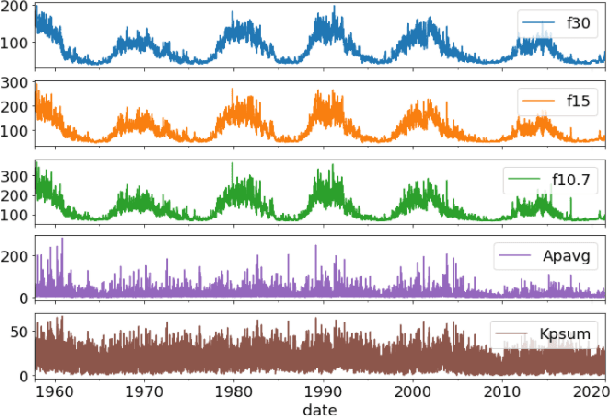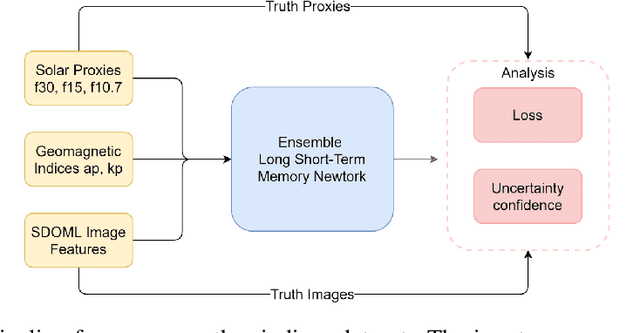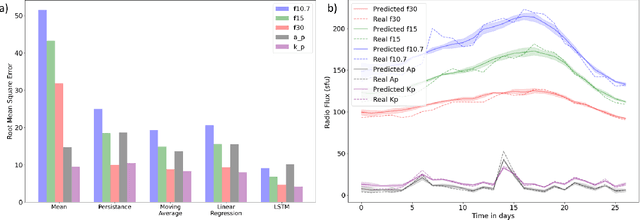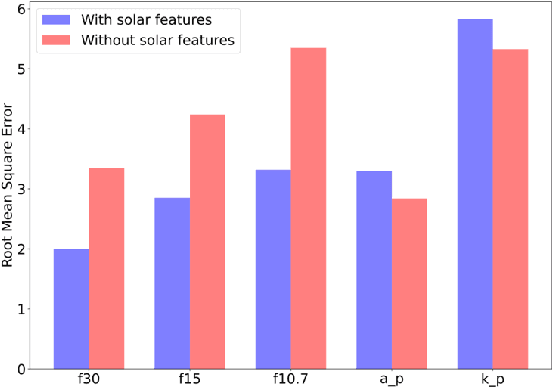Simultaneous Multivariate Forecast of Space Weather Indices using Deep Neural Network Ensembles
Paper and Code
Dec 16, 2021



Solar radio flux along with geomagnetic indices are important indicators of solar activity and its effects. Extreme solar events such as flares and geomagnetic storms can negatively affect the space environment including satellites in low-Earth orbit. Therefore, forecasting these space weather indices is of great importance in space operations and science. In this study, we propose a model based on long short-term memory neural networks to learn the distribution of time series data with the capability to provide a simultaneous multivariate 27-day forecast of the space weather indices using time series as well as solar image data. We show a 30-40\% improvement of the root mean-square error while including solar image data with time series data compared to using time series data alone. Simple baselines such as a persistence and running average forecasts are also compared with the trained deep neural network models. We also quantify the uncertainty in our prediction using a model ensemble.
 Add to Chrome
Add to Chrome Add to Firefox
Add to Firefox Add to Edge
Add to Edge